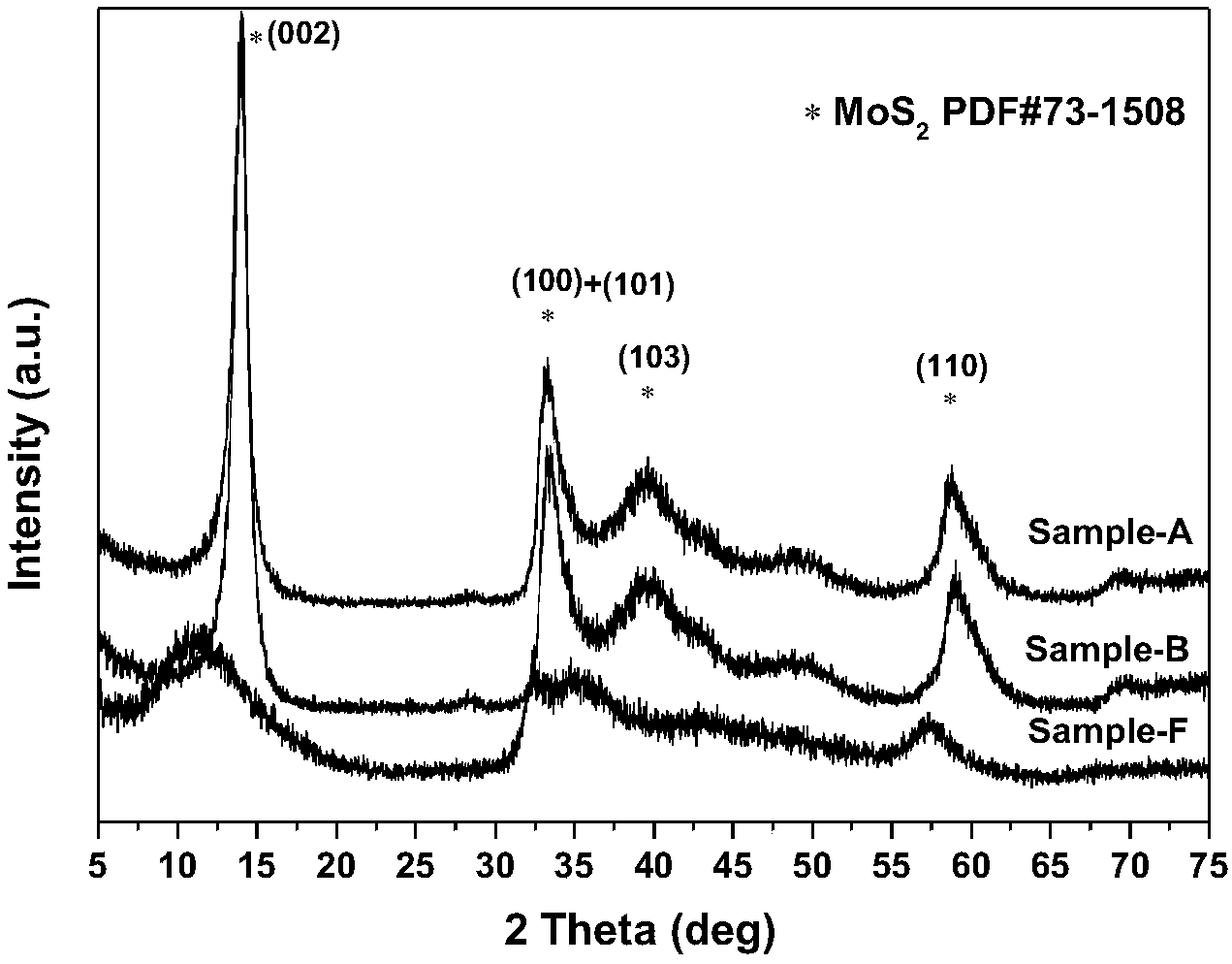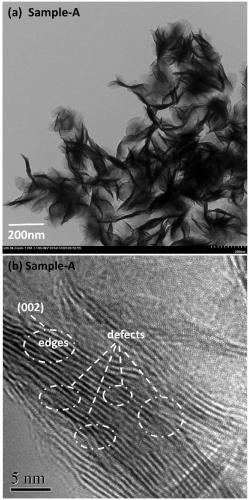A gasoline selective hydrodesulfurization catalyst and its preparation and application
A hydrodesulfurization and catalyst technology, which is applied in catalyst activation/preparation, physical/chemical process catalysts, chemical instruments and methods, etc., can solve the problems of decreasing gasoline octane number, increasing carbon deposition process, restricting industrial application, etc. The effect of high yield and low production cost
- Summary
- Abstract
- Description
- Claims
- Application Information
AI Technical Summary
Problems solved by technology
Method used
Image
Examples
Embodiment 1
[0049] Mix 4.94g of ammonium heptamolybdate and 9.13g of thiourea, add 140ml of deionized water to dissolve, transfer to a hydrothermal kettle with a volume of 200ml, put it in an oven, and conduct hydrothermal heating at 220°C for 18h, then cool naturally, Suction filtration, ultrasonic washing 2-4 times with a mixed solvent of water and ethanol with a volume ratio of 1, and vacuum drying to obtain the molybdenum disulfide nanosheet precursor; dissolve 0.428g of cobalt acetate in 6ml of water, and take 2.5g of molybdenum disulfide nanosheet The tablet precursor was added to the previously prepared cobalt-containing solution, ultrasonically stirred until viscous, and then transferred to a vacuum drying oven at 50°C for 24 hours to obtain a catalyst. The catalyst synthesized in this embodiment is represented by Cat-A. The ICP elemental analysis of the molybdenum disulfide nanosheet precursor in this example shows that the molar ratio of sulfur and molybdenum is 2.03, and the sp...
Embodiment 2
[0051] A catalyst was prepared in the same manner as described in Example 1 except that 6.39 g of thiourea was used instead of the thiourea used in Example 1. The catalyst synthesized in this embodiment is represented by Cat-B. The ICP element analysis of the molybdenum disulfide nanosheet precursor in this example shows that the molar ratio of sulfur and molybdenum is 1.98, and the specific surface area measured by nitrogen adsorption is 60m 2 / g, its XRD characterization as figure 1 As shown, the Raman spectrum is as figure 2 shown.
Embodiment 3
[0053] A catalyst was prepared in the same manner as described in Example 1 except that 4.26 g of thiourea was used instead of the thiourea used in Example 1. The catalyst synthesized in this embodiment is represented by Cat-C. The ICP elemental analysis of the molybdenum disulfide nanosheet precursor in this example shows that the molar ratio of sulfur and molybdenum is 1.94, and the specific surface area measured by nitrogen adsorption is 41m 2 / g.
PUM
| Property | Measurement | Unit |
|---|---|---|
| specific surface area | aaaaa | aaaaa |
| specific surface area | aaaaa | aaaaa |
Abstract
Description
Claims
Application Information
 Login to View More
Login to View More - R&D
- Intellectual Property
- Life Sciences
- Materials
- Tech Scout
- Unparalleled Data Quality
- Higher Quality Content
- 60% Fewer Hallucinations
Browse by: Latest US Patents, China's latest patents, Technical Efficacy Thesaurus, Application Domain, Technology Topic, Popular Technical Reports.
© 2025 PatSnap. All rights reserved.Legal|Privacy policy|Modern Slavery Act Transparency Statement|Sitemap|About US| Contact US: help@patsnap.com



